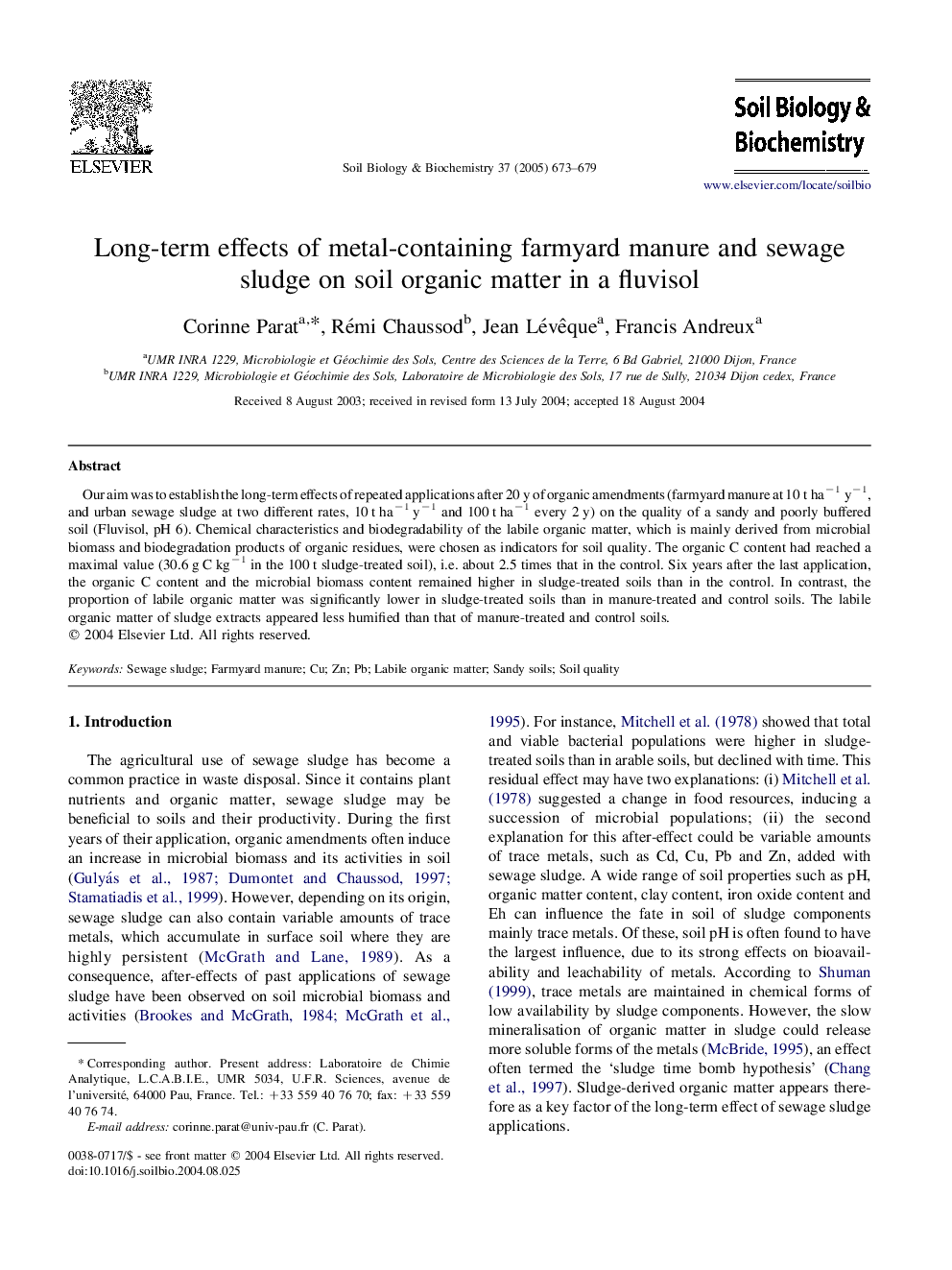| Article ID | Journal | Published Year | Pages | File Type |
|---|---|---|---|---|
| 10846287 | Soil Biology and Biochemistry | 2005 | 7 Pages |
Abstract
Our aim was to establish the long-term effects of repeated applications after 20 y of organic amendments (farmyard manure at 10 t haâ1 yâ1, and urban sewage sludge at two different rates, 10 t haâ1 yâ1 and 100 t haâ1 every 2 y) on the quality of a sandy and poorly buffered soil (Fluvisol, pH 6). Chemical characteristics and biodegradability of the labile organic matter, which is mainly derived from microbial biomass and biodegradation products of organic residues, were chosen as indicators for soil quality. The organic C content had reached a maximal value (30.6 g C kgâ1 in the 100 t sludge-treated soil), i.e. about 2.5 times that in the control. Six years after the last application, the organic C content and the microbial biomass content remained higher in sludge-treated soils than in the control. In contrast, the proportion of labile organic matter was significantly lower in sludge-treated soils than in manure-treated and control soils. The labile organic matter of sludge extracts appeared less humified than that of manure-treated and control soils.
Related Topics
Life Sciences
Agricultural and Biological Sciences
Soil Science
Authors
Corinne Parat, Rémi Chaussod, Jean Lévêque, Francis Andreux,
